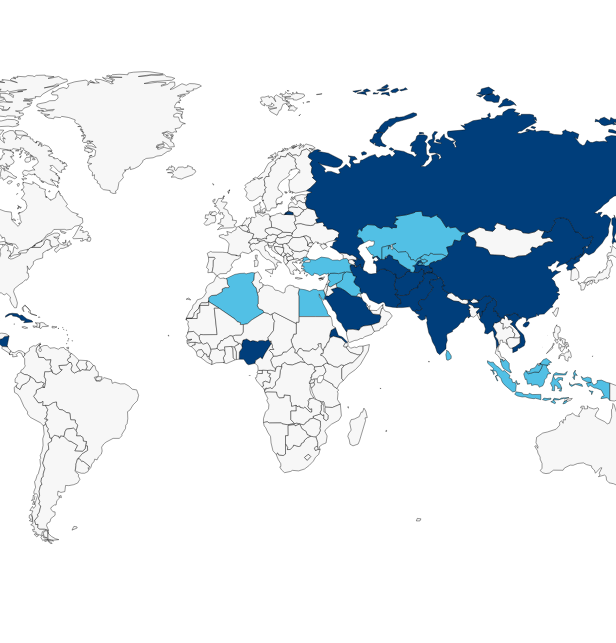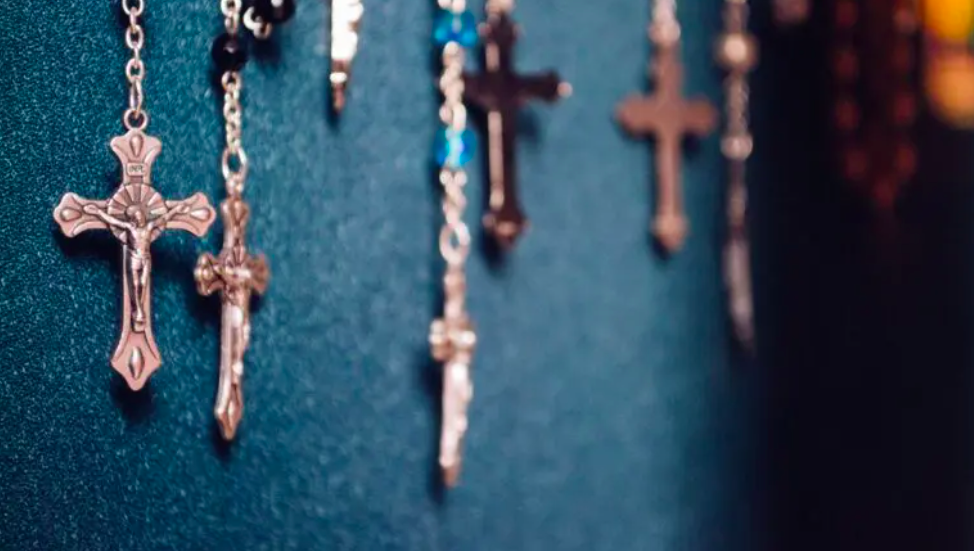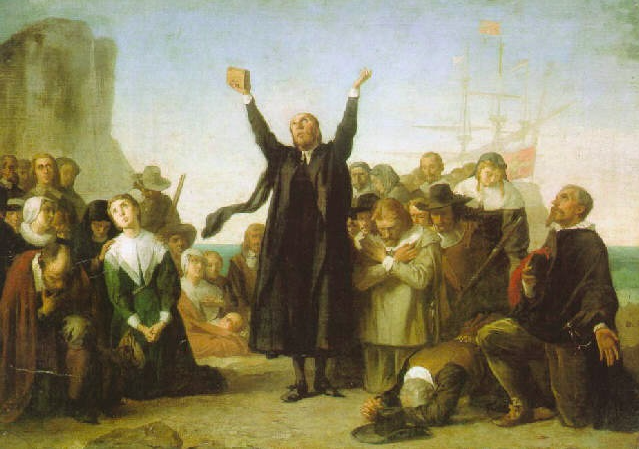Join us as we begin a series of posts focusing on the prioritization of religious freedom in American law and culture. This week our discussion focuses on religious freedom in the twentieth century up to the present and was being initiated with Ken Starr’s post “Shifting Applicability: A History of Judicial Approaches to Free Exercise.”
By: Carl H. Esbeck
It is notable when, in an outbreak of modesty, a liberal democratic state acknowledges that there are limits on its power that have their origin in understandings that preexist the nation’s founding charter but are protected by it. In Kedroff v. St. Nicholas Cathedral (1952), the North American Archdiocese of the Russian Orthodox Church had broken communion with the Patriarchate in Moscow. The cause of the disaffection, coming as it did at the height of the Red Scare, can be summed up by a fear that the Mother Church had been co-opted by Stalinist brutality and Soviet politics. A consequential disagreement involving church polity led to a lawsuit over possession of St. Nicholas Cathedral. Situated in New York City, the Cathedral is the seat and symbol of ecclesiastical authority of the Russian Orthodox faith in all of Canada and the United States.
Before Kedroff, the U.S. Supreme Court maintained that in cases involving hierarchical churches the law required federal courts to refuse to hear disputes over church administration. Such matters, which can be collected under the heading of “church governance,” include the selection of clergy, the criteria for members, and doctrinal disputes that, once resolved, had a consequential bearing on who held rights to church property. Federal magistrates, should their jurisdiction be called upon by one of the factions, were to defer to the resolution of the dispute by the highest church judicatory. While the rule of judicial deference was mostly clear, the source of the rule was not. The Court said that the legal principle was based on religious liberty and our nation’s view concerning the separation of church and state. But the civil courts in more than just a few of the states resolved their cases on a very different basis.
Most churches are not strictly hierarchical but have complex connectional ties between the local assembly and a central body. The Court in Kedroff, however, did not have to clarify the sense in which a distressed church is “hierarchical,” for the parties agreed that the Russian Church fit the definition. She is an autocephalous member of the Eastern Orthodox Church that sprang from the Church at Constantinople that had split from the Roman Church in the eleventh century.
Kedroff elevated the rule of judicial deference to First Amendment status, and it was now binding on the states through the Fourteenth Amendment. Justice Stanley Reed, for a near unanimous Court, penned the oft-quoted passage in Kedroff that reached back to embrace the Court’s one noteworthy prior case: “The opinion [of Watson v. Jones ] radiates . . . a spirit of freedom for religious organizations, an independence from secular control or manipulation—in short, power to decide for themselves, free from state interference, matters of church government as well as those of faith and doctrine.”
If bad facts make bad law, Kedroff would have been decided differently. The Russian Orthodox Church was a religious establishment under the Czars. When the Church sided with the White Russians during the Revolution of 1917, Bolsheviks arrested or murdered hundreds of her clergy, usually on charges of collaboration with the enemy, anti-revolutionary comments in sermons, or resistance to nationalization of church property. In January 1918, a decree separated the Church from the state and deprived the Church of status as a legal person. The Law of Religious Associations of 1929 limited worship services to buildings registered with the state, and made illegal missionary work, distributing religious literature, and religious education. Not until the Second World War did the Soviets reach out to the Russian Church, seeking her aid to rally the people to resist the Nazi menace. In this thawing of relations, a Council for the Affairs of the Russian Orthodox Church was set up in 1943. In 1945, a convention of clergy and laity was permitted in Moscow where a new Patriarch was chosen. As the Cold War set in, however, and deepened with Communist advances in China and the beginning of the Korean War in 1950, there were widely shared suspicions in North America that the Patriarchate and Holy Synod had been infiltrated and “was no longer capable of functioning as a true religious body” but had become “a tool of the Soviet Government.”
The Archdiocese of North America was formed in 1904, and soon thereafter an archbishop, appointed by the Mother Church, established himself in the newly completed St. Nicholas Cathedral. In 1917, a successor archbishop traveled to Russia and in time was imprisoned. In 1920, Church authorities in Moscow issued a directive concerning administration in troubled times, giving the North Americans some autonomy for the duration. Continuing to watch events from afar, the faithful in North America held a convention in Detroit in 1924. The result was that the North American archdiocese, while remaining in “full spiritual communion with the patriarchate,” proceeded to administer properties in North America. A corporation was formed in 1925 by the New York legislature for the purpose of holding title to property. In 1945, New York added to the religious corporation act to authorize the conduct of church administration and the preservation of property.
The Mother Church now sought to reunify with the Americans. A condition was that the North American Archdiocese would direct local parishes to refrain “from political activities against the U.S.S.R.” Reunion was rebuffed and this lawsuit followed. Invoking the 1945 legislation, the New York corporation sought the use and control of St. Nicholas Cathedral and, indeed, all properties long enjoyed by the Church in North America. The North American prelate appointed by the Moscow Patriarch was named the primary defendant.
The Supreme Court struck down the 1945 act. The act was said to work “a transfer by state of control over churches. This violates our rule of separation between church and state.” Justice Reed wrote that “[b]y fiat [the act] displaces one church administrator with another.” Every church has a polity, be it hierarchical or otherwise. Kedroff held that the state cannot, in a desire to take sides, alter that polity.
There was commentary in older cases that church governance was protected by the same law as voluntary associations, such as Rotary or a tennis club. The law of voluntary associations sought to give meaning to the intent of a club’s members as understood by them prior to the dispute arising, especially where the evidence of intent is found in charters and practices to which the members had tacitly consented. With Kedroff, church governance was elevated above the rights of a local service club, for, unlike the Rotary, a church has a place in the free-exercise and no-establishment provisions of the First Amendment. Civil magistrates were now prohibited from digging into a hierarchical church’s past in search of real or implicit understandings and consents. Rather, once the proper judicatory was identified, a civil court is to follow that body’s determination.
Kedroff’s deference to ecclesiastical jurisdiction was categorical, that is, devoid of any balancing that takes into account the interests of the state. Such an acknowledgment of sovereignty outside the state cannot, in the nature of things, be overly expansive. Nevertheless, the scope of this authority is not limited to disputes over religious dogma. In Kedroff, the New York court sided with the North Americans. The Americans insisted they remained in “spiritual commun
ion” with the Mother Church, so the split was not over doctrine but polity. In an earlier case, cited with approval in Kedroff, the disagreement was over the enforcement of a testamentary bequest that funded a clerical office of the Roman Church. Again, the disagreement was not doctrinal because the candidate unquestionably failed the qualifications for age and education required by canon. Regardless, the selection of clergy was a matter “strictly ecclesiastical” and thus the decision of the Church was binding on federal courts.
Reflecting a sharp division among the Justices that would manifest in later cases, Justice Reed said that “in those cases when the property right follows as an incident from decisions of the church custom or law on ecclesiastical issues, the church rule controls.” However, in a concurring opinion, Justice Felix Frankfurter wrote for himself and two other Justices, that if a property dispute, “though generated by conflicts of faith,” can “fairly be isolated” from other questions at issue, then the property matter was “within judicial competence.” He does not say just why the litigation here could not “fairly be isolated” so as to focus only on the question of who controls the property. Nor does Frankfurter say how his position on the isolation of a property dispute from the underlying doctrinal disagreement could be reconciled with Watson v. Jones. In the lone dissent, Justice Robert Jackson said that he would leave questions of real estate to the states.
Kedroff set down a few markers as to what was not a matter of church governance. If the issue was “subversive action,” such as abetting terrorism, the government retained authority. But in Kedroff, as Frankfurter pointed out, what we had was not sedition but at most a disloyalty to the foreign policy of the United States. Many religious bodies have strong ties to other nations. Foreign allegiance is not a justification for state intervention, nor was interference called for because of diversion of the Church’s resources to the promotion of Soviet politics or Marxist-Leninist atheism. Moreover, churches were said to be unlike a labor union where, in a prior case, the Court had upheld a congressional ban on unions being in league with the Communist Party. Finally, Justice Jackson argued that incorporation of the North American Church conferred state power to override the Church in “temporal affairs.” That argument failed, apparently because government services cannot be conditioned on the forfeiture of ecclesiastical authority over matters properly consigned to church governance.
The Court’s decision was not received well in New York. Indeed, the state’s highest court evaded the overturning of the 1945 legislation by awarding use of St. Nicholas to the Americans on the basis of the state’s common law. Eight years later the Supreme Court held in Kreshik v. St. Nicholas Cathedral , that New York could no more do through its judicial branch what was unconstitutional when attempted by its legislature.
Among the twentieth century’s inventory of religious freedom cases, Kedroff is one of the more obvious where the separation of church and state worked to protect religion from the state. Because what was safeguarded was not an individual right but an ecclesiastical domain outside the government’s jurisdiction, Kedroff aligns with the pluralist view that much of our common human enterprise is best lived out in an open and diverse civil society of which government is just a part. Because of Kedroff, it could be said in mid-last century—and now—that the proper ordering of church-state relations necessarily gives recognition to a circle of authority that is not Caesar’s.
Carl H. Esbeck is the R.B. Price Professor Emeritus and Isabelle Wade & Paul C. Lyda Professor Emeritus at the University of Missouri School of Law.
This piece was originally authored on June 6, 2014 for the Religious Freedom Project at Georgetown’s Berkley Center for Religion, Peace, and World Affairs.
THE RFI BLOG

Myths of Religious Nationalism in America and Abroad

France’s Olympic Hijab Ban Violates International Law And Exacerbates Tensions

RFI Briefs USCIRF on Lessons from 25 Years of U.S. Designating Religious Freedom Violators

Thought Police: Protecting the People from Prayer

A Religious “Delaware”: Establishing a State Haven for Religious Corporations
CORNERSTONE FORUM

Challenges to Religious Freedom in Iraq and the Critical Need for Action

Public Bioethics & the Failure of Expressive Individualism

Religious Liberty in American Higher Education

Scotland’s Kate Forbes and the March of Secularism


